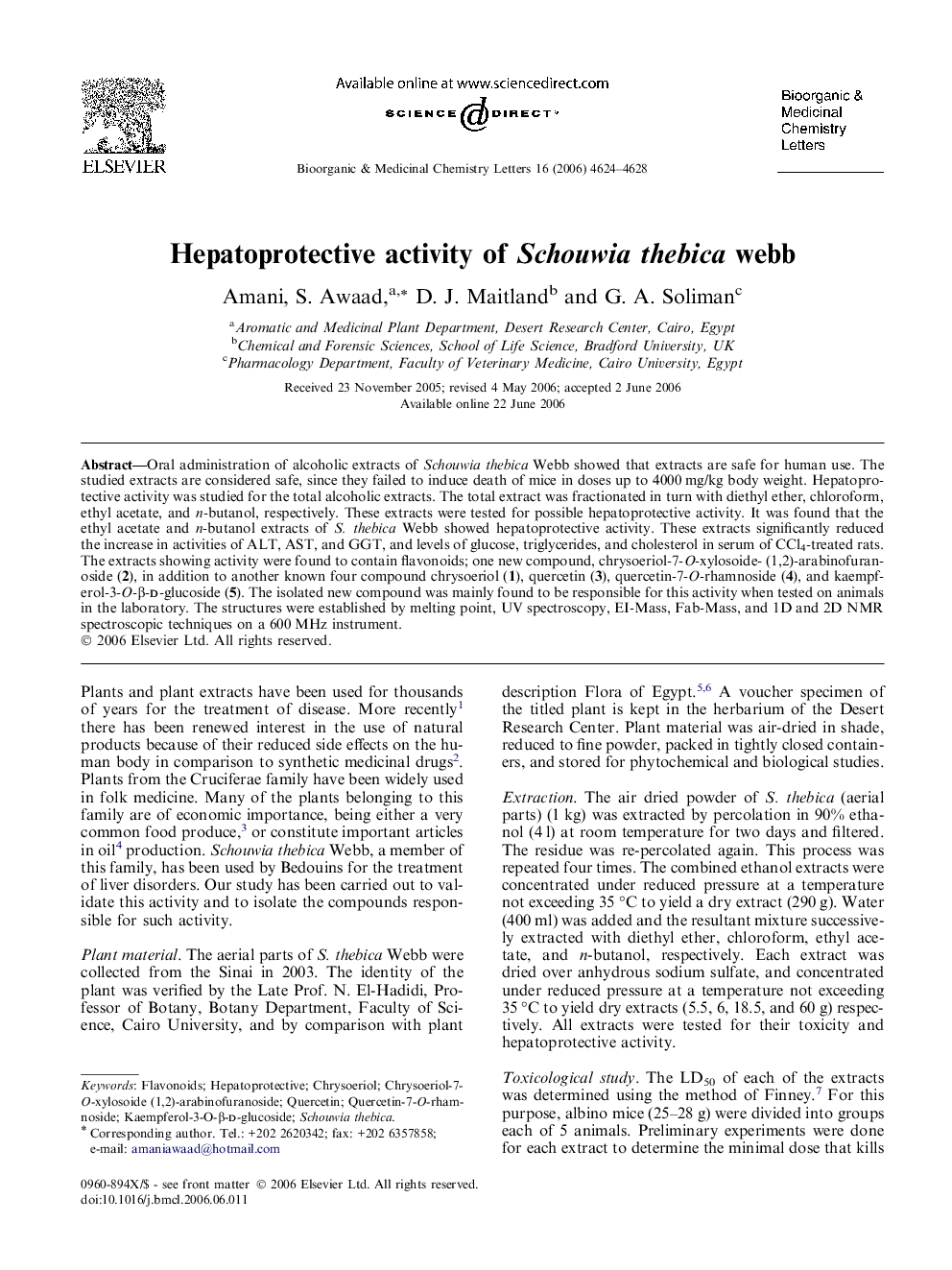| Article ID | Journal | Published Year | Pages | File Type |
|---|---|---|---|---|
| 1377729 | Bioorganic & Medicinal Chemistry Letters | 2006 | 5 Pages |
Oral administration of alcoholic extracts of Schouwia thebica Webb showed that extracts are safe for human use. The studied extracts are considered safe, since they failed to induce death of mice in doses up to 4000 mg/kg body weight. Hepatoprotective activity was studied for the total alcoholic extracts. The total extract was fractionated in turn with diethyl ether, chloroform, ethyl acetate, and n-butanol, respectively. These extracts were tested for possible hepatoprotective activity. It was found that the ethyl acetate and n-butanol extracts of S. thebica Webb showed hepatoprotective activity. These extracts significantly reduced the increase in activities of ALT, AST, and GGT, and levels of glucose, triglycerides, and cholesterol in serum of CCl4-treated rats. The extracts showing activity were found to contain flavonoids; one new compound, chrysoeriol-7-O-xylosoide- (1,2)-arabinofuranoside (2), in addition to another known four compound chrysoeriol (1), quercetin (3), quercetin-7-O-rhamnoside (4), and kaempferol-3-O-β-d-glucoside (5). The isolated new compound was mainly found to be responsible for this activity when tested on animals in the laboratory. The structures were established by melting point, UV spectroscopy, EI-Mass, Fab-Mass, and 1D and 2D NMR spectroscopic techniques on a 600 MHz instrument.
Graphical abstractOral administration of alcoholic extract of Schouwia thebica Webb showed that extracts are safe for human use, since it failed to induce death of mice in doses up to 4000 mg/kg body weight Hepatoprotective activity of the total alcoholic, diethyl ether, chloroform, ethyl acetate and n-butanol extracts were tested. It was found that the ethyl acetate and n-butanol extracts showed hepatoprotective activity. These extracts significantly reduced the increase in activities of ALT, AST, GGT, levels of glucose, triglycerides and cholesterol in serum of CCl4 treated rats. The extracts showing hepatoprotective activity were found to contain a new flavonoid chrysoeriol-7-O-β-D-xylopyranoside-(1-2)-arabinofuranoside which was mainly found to be responsible for this activity when tested on lab animals alongside four flavonoids, known as chrysoeriol, Quercetin, quercetin-7-O-rhamnoside and kaempferol-3-O-β-D-glucoside. The structures were established by different spectroscopic techniques.Figure optionsDownload full-size imageDownload as PowerPoint slide
